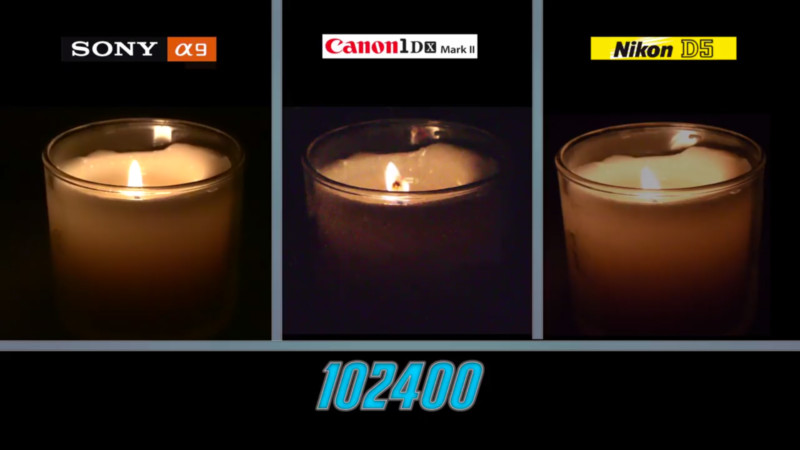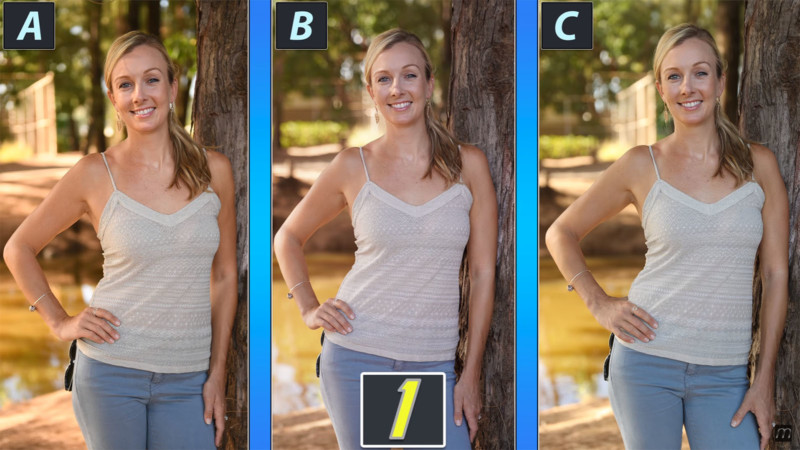Sony a9 vs. Canon 1D X II vs. Nikon D5: A Flagship Camera Shootout
The flagship cameras from Sony, Canon, and Nikon — the a9, 1D X II, and D5 — are all brilliant pieces of kit, but which is right for you? This 45-minute shootout from Michael Andrews (aka Michael The Maven) objectively compares the three cameras in great detail.
Table of Contents
Here’s a breakdown of the sections found in the video:
01:04 – Intro
05:30 – Sports Shooting
16:05 – Low Light Focusing
16:45 – Video Focusing
18:06 – Dynamic Range
22:27 – High Portrait ISO
23:48 – Moire Test
24:12 – Thermal Test
24:53 – Rolling Shutter
25:24 – Real World Video
29:07 – Portrait Test
32:10 – Ergonomics
32:11 – Conclusion
Here are some of the interesting highlights from Andrews’ tests and comparisons…
Cost
Andrews kicks things off by comparing the raw specs of the three cameras, as well as their price. The D5 is hardest on the wallet at $6,800, the 1D X II is $6,000, and the a9 is only $4,500. However, Sony’s lens lineup costs more than the Nikon and Canon equivalents, bringing the total cost back in line with the other cameras.
Sports Shooting
For the tests, Andrews uses the most current 24-70mm f/2.8 non-IS lenses from each manufacturer, as well as the 70-200mm f/2.8 IS lenses.
The first tests starting from 05:30 are comparing the performance of the cameras in sports shooting. This is where the Nikon especially excels, while the a9 struggles with dropping focus while rack zooming in. Despite the lower accuracy, however, the faster frame rates afforded by the a9 and 1D X II resulted in more ‘keepers’ from both cameras when compared to the D5.
Andrews says that he would gravitate towards the Canon and Nikon offers over Sony’s a9 due to the consistency. He says that the a9 feels more like cutting-edge tech with less polish and stability compared to the other cameras.
Dynamic Range
For testing dynamic range test at 18:06. Andrews uses a Stouffer wedge, which allows him to test the camera’s ability to differentiate between one-third stop intervals at ISO 100, 1600, and 6400.
At all ISO ratings, the cameras perform comparably, though each with their own unique issues. The 1D X II shows higher color noise, the D5 suffers from some banding, and the a9 has issues with posterization.
![]()
![]()
![]()
High ISO JPEGs
From 21:35 Andrews tests the ability of the cameras to produce sharp JPEG images at increasingly high ISOs, measuring the way the cameras apply noise reduction. In this test, the a9 is the standout performer.
![]()
![]()
High ISO Video
He then moves on to a video test at high ISO, in which the a9 blows the competition away.

Color Tone Blind Test
Color tone comparison is a very subjective thing, so for this test, Andrews leaves it to the viewer. From 29:00 he takes a number of identical portrait sets with each camera and randomizes them.

By scoring each image and calculating the results, you can get a good idea of which camera produces images that you prefer the most. You can find the camera models matched with the photos at 30:44.
Conclusions
Andrews’ overall conclusion is at 32:00. “This is not a comparison of apples to apples,” he says. “The 1D X II and D5 are two different flavored apples, but the a9 is an orange”.
Nikon D5
Pros: Incredible focusing system; excellent ergonomics and usability making it the most enjoyable to use; super high-speed dual XQD slots.
Cons: Most expensive; not a great choice for video use.
Canon 1D X II
Pros: Michael’s favorite for flesh tones and reds. All-round excellent performer for both still and video – excellent video performance compared to the D5.
Cons: Michael found difficulty listing any cons, although more efficient video codecs would be a plus.
Sony a9
An orange, but Michael’s preferred pick of the three.
Pros: Michael says the a9 is better in many ways, but it does have some rough edges. The camera itself is the lowest price; it has the best sensor design; it is excellent for video purposes; the eye detection performs extremely well; it has great focus coverage; the tilting monitor is a plus.
Cons: The camera is not as consistent when rack zooming, dropping focus especially while zooming in. The menu lockout while writing is frustrating; the available memory cards are slower, and the biggest con is that it is currently lacking the lens lineup to support it.
Watch the full 45-minute video at the top of this article for an in-depth look at these tests and more. You can also find more of Andrews’ videos on his popular YouTube channel.